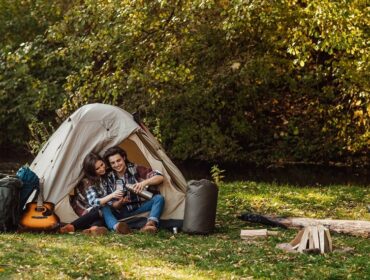Are you ready to embark on your next outdoor adventure? Whether you’re trekking up rugged mountains, hiking through dense forests, camping under a starlit sky, or climbing steep rock faces, your gear can make or break your experience. Choosing the right equipment isn’t just about comfort—it’s about safety, functionality, and, often, survival in harsh environments. In this blog, you’ll learn about the best outdoor gear that you need for a wide range of activities, ensuring you’re prepared for whatever nature throws your way.
Why the Right Gear and Quality Matter?
You might be tempted to go for cheaper options when selecting outdoor gear, but trust me—it’s not worth it. You’ll want to invest in the best outdoor gear because it lasts longer, performs better, and, most importantly, keeps you safe. Imagine hiking in a pair of boots that don’t provide adequate support. Moreover, you’ll quickly feel every rock underfoot, and blisters will form faster than you can find a trail marker. The same goes for your tent, backpack, and sleeping bag. If you opt for low-quality gear, you’re risking discomfort, frustration, and, in some cases, danger. The best outdoor gear helps keep you safe, comfortable, and ready for whatever comes your way.
Let’s go through all the things you need to be ready for an outdoor adventure, step by step.
Essential Clothing
Your clothing is your first line of defense against the elements. Here’s what you need to stay comfortable in any weather:
1. Base Layers
Start with moisture-wicking base layers. These keep you dry by pulling sweat away from your skin. Look for materials like merino wool or synthetic blends. A good base layer regulates your body temperature and prevents chafing during long hikes or climbs.
2. Insulating Layers
Next, add insulating layers to trap warmth. Moreover, fleece jackets or wool sweaters work great for this. They’re lightweight but effective at keeping you cozy. For colder conditions, consider a down jacket. It’s incredibly warm for its weight and compresses easily in your pack.
3. Outer Layers
Your outer layer should protect you from wind and rain. A good quality waterproof jacket is a must-have piece of best outdoor gear. Look for jackets with sealed seams and adjustable hoods for maximum protection. Don’t forget waterproof pants for those really wet days! A pair of rain pants can also double as wind protection in chilly conditions.
Perfect Footwear

The right footwear can make or break your outdoor experience, and choosing the perfect pair can be a game-changer. For tackling rough terrain, investing in sturdy, comfortable hiking boots is essential. Look for boots with excellent ankle support and a waterproof membrane like Gore-Tex to keep your feet dry and stable in wet or uneven conditions. The combination of durability, support, and waterproofing ensures you can confidently face challenging hikes without discomfort or injury.
On less demanding trails, trail running shoes might be a better choice. These shoes are lighter, more breathable, and offer the flexibility you need for day hikes or trail runs. They are perfect for those who value speed and agility over heavy-duty protection. The lightweight nature of trail running shoes helps reduce fatigue, allowing you to cover more ground comfortably while still providing enough grip for uneven surfaces.
No matter what type of footwear you choose, breaking in new shoes before a big adventure is crucial. Wearing them on a few shorter walks or hikes will help mold the shoes to your feet and prevent painful blisters that could ruin your trip. Remember, comfort is key; take the time to ensure your footwear is ready for the journey so you can focus on enjoying every step of your adventure.
Sleeping Gear for Overnight Adventures

A good night’s sleep can recharge you for the next day’s adventures. Here’s what you need for a comfortable night under the stars:
1. Tents
Your home away from home deserves careful consideration. Look for a tent that’s easy to set up, lightweight if you’re backpacking, and appropriate for the conditions you’ll face. A 3-season tent is versatile enough for most campers. Consider factors like ventilation, vestibule space for gear storage, and the tent’s ability to withstand wind and rain.
2. Sleeping Bags
Choose a sleeping bag rated for the lowest temperature you expect to encounter. Down-filled bags are lightweight and compressible, making them ideal for backpacking. They’re also incredibly warm for their weight. However, synthetic bags perform better in damp conditions and are often more affordable. Consider the shape of the bag too; mummy bags are warmer but more restrictive, while rectangular bags offer more room to move.
3. Sleeping Pads
Don’t underestimate the importance of a good sleeping pad. It not only provides comfort but also insulates you from the cold ground. Inflatable pads offer the best combination of comfort and packability. Some even come with insulation for colder weather camping. For car camping, you might opt for a thicker, self-inflating pad or even a cot for ultimate comfort.
Cooking and Hydration Essentials

Staying well-fed and hydrated is crucial for any outdoor activity. Here’s the best outdoor gear for your camp kitchen:
1. Stoves
A reliable camp stove is essential for hot meals and drinks. Canister stoves are easy to use and great for backpacking. They’re lightweight and simple to operate. Liquid fuel stoves perform better in cold conditions and at high altitudes. They’re also more versatile in terms of the fuel they can use. For group camping, consider a two-burner propane stove for more elaborate meals.
2. Cookware
Lightweight, durable pots and utensils make meal prep a breeze. Look for compact sets designed specifically for camping. Titanium cookware is incredibly light and strong, while aluminum sets offer a good balance of weight and affordability. Don’t forget a mug for your morning coffee and a spork for eating!
3. Water Filtration
Clean water is a must. Bring a water filter or purification tablets to make sure you always have safe drinking water. Some bottles even come with built-in filters for convenience. Pump filters are great for group use, while gravity filters are perfect for base camp. For ultralight backpacking, consider chemical treatment drops or UV purifiers.
Navigation and Safety Gear

Getting lost or injured in the wilderness is no joke. Be prepared with these essentials:
1. Maps and Compass
Even in the age of smartphones, a physical map and compass are crucial. They never run out of battery! Learn how to use them properly before heading out. Consider getting a waterproof map case to protect your maps from the elements.
2. First Aid Kit
A well-stocked first aid kit can be a lifesaver. Make sure you know how to use everything in it. Include items like bandages, antiseptic wipes, pain relievers, and any personal medications you might need. Consider taking a wilderness first aid course to be fully prepared.
3. Emergency Shelter
A lightweight emergency blanket or bivy sack can provide crucial protection if you’re stuck outdoors unexpectedly. These take up little space in your pack but could be lifesaving in an emergency situation.
Backpacks for Carrying All Your Gear

Your backpack is your trusty companion on the trail, carrying all your essentials. Choose wisely, and it’ll be your best friend; choose poorly, and it might become your worst enemy. For day hikes, a nimble 20-30 liter pack does the job. These lightweight warriors carry your water, snacks, and extra layers without weighing you down.
Venturing out for longer? Grab a 50-70-liter pack for overnight or multi-day trips. Look for robust hip belts and adjustable suspension systems; your back will thank you after a long day on the trail. Don’t shy away from loading up the pack in the store. Take it for a test drive around the aisles. If it feels off, it’s not the one.
Remember, a good backpack is like a good friend—it supports you when you need it most. Whether you’re scaling mountains or strolling through meadows, the right pack makes every step a breeze. So choose carefully, pack smartly, and hit the trail with confidence. Your adventures await!
The Importance of Investing in the Best Outdoor Gear
Whether you’re a seasoned adventurer or just getting started, investing in the best outdoor gear is one of the smartest decisions you can make. Not only does it improve your overall experience, but it also ensures your safety and comfort in unpredictable environments. High-quality gear lasts longer, performs better, and saves you from unnecessary hassle when you’re out in the wilderness.
At the end of the day, your outdoor gear is your most important tool when you’re in nature. From camping to climbing, trekking to hiking, choosing the best outdoor gear gives you the freedom to focus on what really matters—enjoying the beauty of the outdoors. So, take your time, do your research, and select gear that’s built to last. Your next adventure depends on it.
Conclusion
Equipping yourself with the best outdoor gear ensures your comfort, safety, and the ability to fully enjoy every adventure. The right gear helps you thrive, not just survive, in nature’s wonders-from staying warm and dry to resting under the stars. With the right preparation, you’re ready for every challenge and thrill that comes your way. So gear up, get outside, and make unforgettable memories in the great outdoors!





